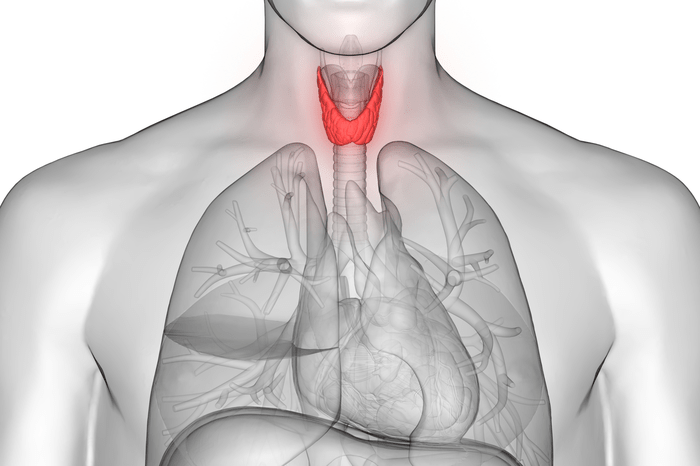
Trauma patients can be some of the most complex challenges you will encounter as a paramedic. Traumatic injury can take many forms, from penetration, to blunt trauma, to amputation. Assessing the trauma patient involves triaging any life-threatening injuries, and correcting or stabilizing your patient until you can turn them over to a trauma team. When trauma involves the trachea, your patient may be at serious risk.
Trauma to the trachea can result from a variety of events. Gunshot or stab wounds can produce penetrating injuries to the neck. In fact, gunshot wounds are the most frequent causes of penetrating trauma affecting the trachea and bronchia (tracheobronchial).1 Blunt trauma, from collisions or falls, can also impact the trachea.
In any case of suspected tracheal trauma, your main priority is securing the airway, because traumatic injury to the neck or throat will most likely impede the airway. Associated swelling and bleeding, tracheal contusion or collapse, or—worst-case scenario—complete transection of the trachea, can disrupt airflow, prevent adequate ventilation, or complicate airway interventions. You must take immediate measures to ensure a patient airway.
Another consideration with tracheal trauma is cervical spine injury, especially in cases of blunt trauma. Be sure to maintain cervical immobilization to prevent further injury.
Patient Assessment
Assessing the patient with tracheal trauma will focus primarily on the airway. This includes:
- Positioning the Patient: If spinal immobilization is a concern, you will most likely position your patient supine on a backboard. Be sure to monitor the airway and have suction ready. Injuries to the trachea may cause bleeding into the airway, necessitating either oral or endotracheal suctioning.
- Listening to Your Patient: Be alert for any unusual sounds emanating from the patient. Stridor may indicate an upper airway obstruction.
- Examining Closely: Examine the mouth for blood and tissue, and carefully palpate the neck to assess injuries.
- Assessing Chest Rise: Be sure the patient has equal, adequate chest rise and watch for indications of increased work in breathing, such as the use of accessory muscles.
Should You Intubate?
With tracheal trauma, the decision to intubate may be complicated by the type of injury your patient has sustained. In crush injuries, it may be difficult to pass an endotracheal tube, but the advantages of an advanced airway may outweigh the concerns. These advantages include:
- Isolating the airway
- Allowing ventilation with 100 percent oxygen
- Decreasing the risk of aspiration pneumonia – in the case of trauma, especially blood and tissue
- Facilitating tracheal suctioning
- Preventing gastric distention
- Providing an additional route for certain medications
The decision to intubate should be made immediately. The main indications for placing an endotracheal tube are:
- The patient is unable to protect their airway
- The patient has significant oxygenation problems, who requires high concentration of oxygen
- The patient has significant ventilatory impairment and requires assisted ventilations
The Role of Suction
As with any traumatic injury, there will usually be associated bleeding, and when the trauma impacts the trachea, it poses the danger of bleeding directly into the airway. One of the most essential tools to maintain airway patency in such cases will be your portable suction unit.
Suctioning the tracheal trauma patient will prevent blood, mucus, and tissue from obstructing the airway. Effective oral suctioning requires a few simple steps. They include:
- Prepping your equipment: Ensure your unit is charged and functioning, and that you have the appropriate suction catheter available.
- Prepping your patient: Maintain cervical immobilization when necessary, while positioning your patient for suctioning.
- Suction with care: Especially in cases of trauma, since the normal airway structures may be damaged.
- Avoid prolonged suctioning: Prevent hypoxia by limiting your suctioning to 10 seconds.
- Continuous suction: If the patient has an advanced airway in place, apply continuous oral suction, while still ventilating the patient, to manage heavy bleeding.
Tracheal trauma can present serious airway complications. You must act quickly to ensure airway patency, while preventing further injury in cases of spinal trauma. Suction plays a vital role in keeping the airway clear, so be sure to include a portable suction unit as part of your trauma assemblage.
12014
Altinok, T. and A. Cann
Management of Tracheobronchial Injuries, The Eurasian Journal of Medicine, https://www.ncbi.nlm.nih.gov/pmc/articles/PMC4299837/
2011
Prehospital Trauma Life Support, American College of Surgeons, Committee on Trauma, MOSBY JEMS, Elsevier.















